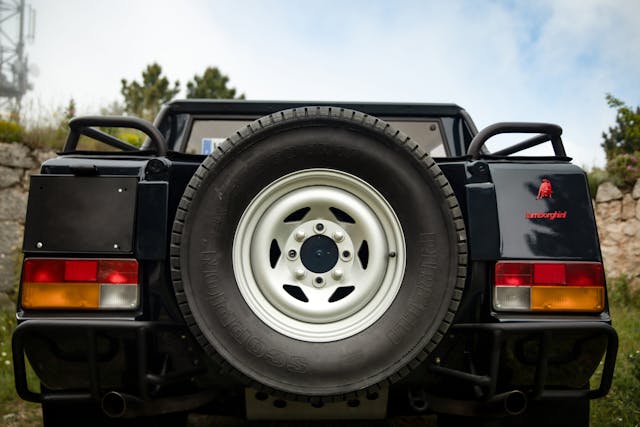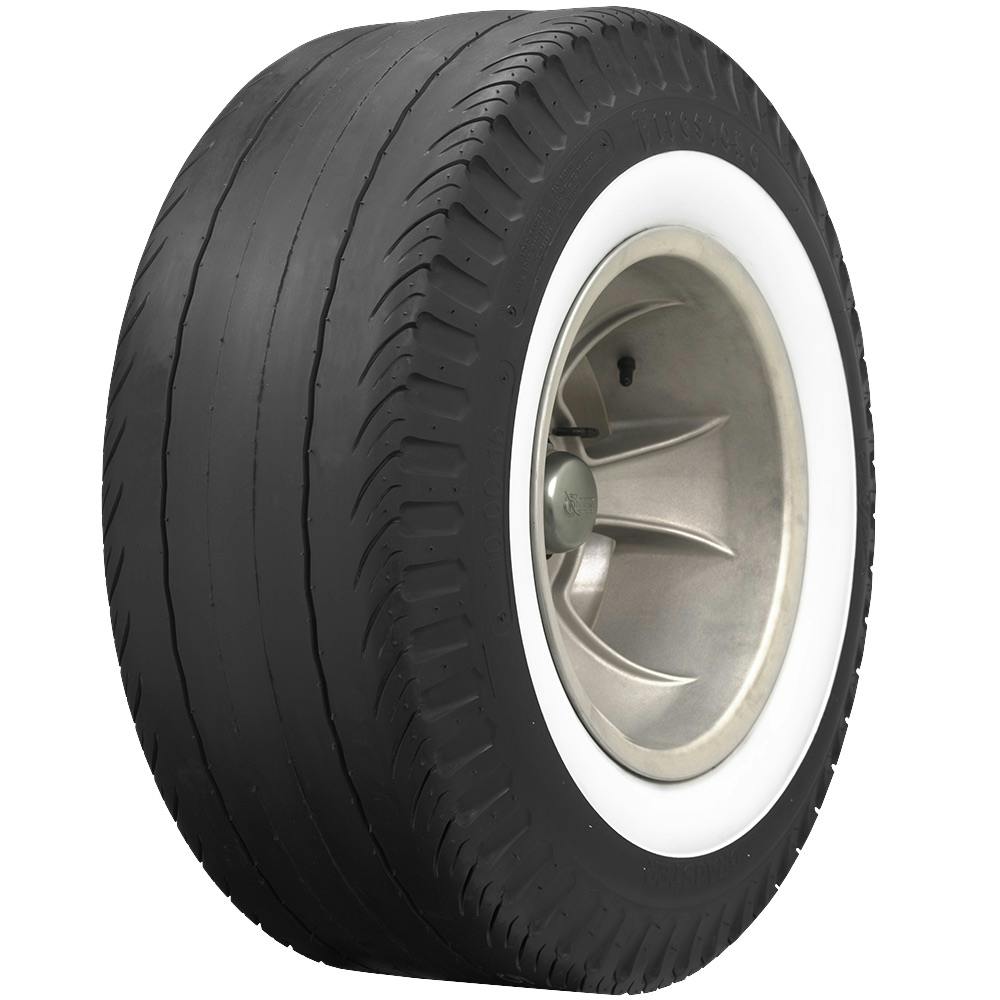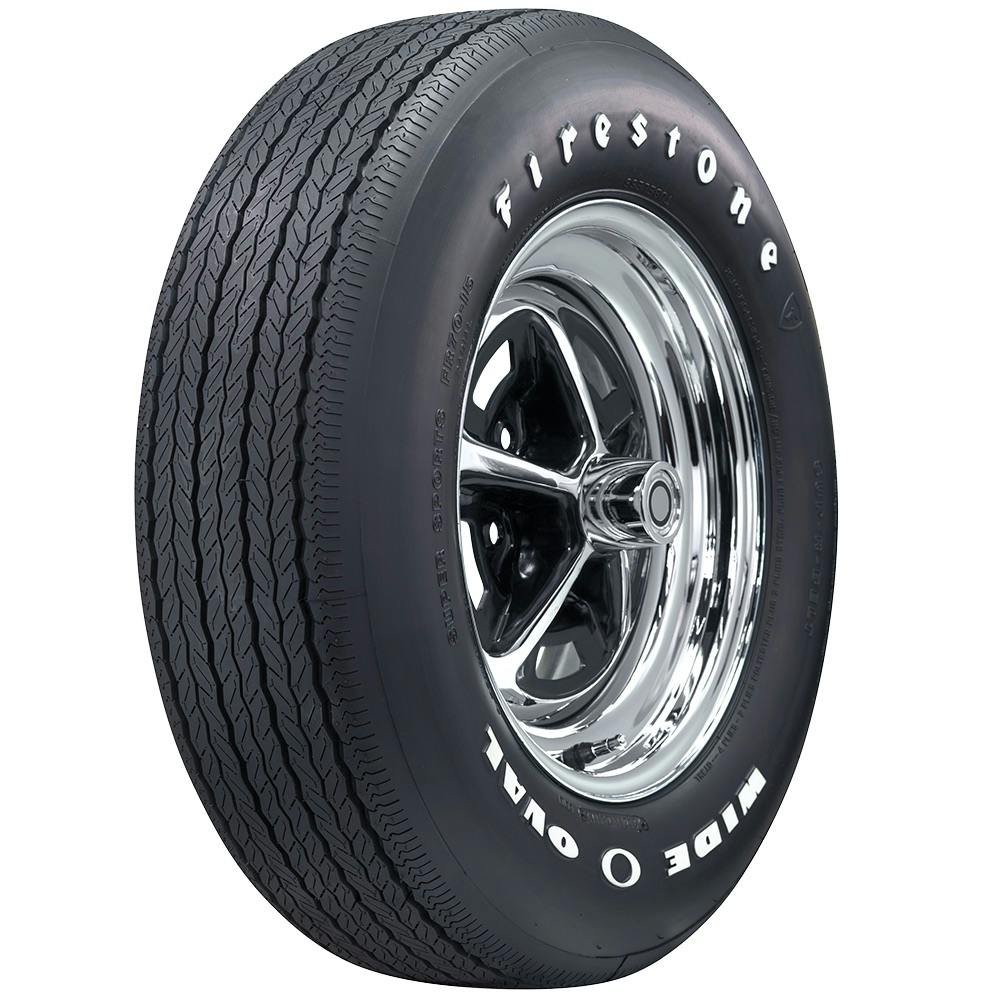Media | Articles
How vintage tires evolved from a problem to an industry
If you want a sense of just how much the collector car world has grown in recent decades—and how much better it is for enthusiasts—you could do worse than kick some tires.
Securing new vintage-spec tires is, for most anything, a non-issue. Weird and one-off cars with unconventional wheel-sizes, retired race cars, and even concepts. No matter the type, purpose, and fitment of tires for your classic, there’s likely a specialty manufacturer or distributor that will shoe your old motor-steed with fresh, pliant rubber. Specialty modern manufacturer Blockley Tyre produces bespoke shoes for old Grand Prix cars like the Bugatti Type 35, while a slew of vintage tire supply companies like Lucas Tire, Universal Tire, and Longstone offer a selection of brand-new classic tires sourced from some of the biggest names in the business. Pirelli, Dunlop, Avon, Michelin, and Vredestein offer reissues of some of their historically popular tires, particularly those found riding under old sports and supercars.
It was not always this way. In fact, as recently as fifteen years ago, finding the right tire was a lot harder. “Years ago, on my old Ferrari 275 GTB, I was paying $500 a corner for replacement tires that should have been no more than $200,” remembered automotive historian and Hagerty contributor Ken Gross. “The 205/R14s in the original size were a pain to find,” he explained. “In the 1950s and 1960s, you saw Duesenbergs rolling around at events with truck tires, as you simply could not source a fresh tire in original spec. And, no one wanted the old stuff since it was hard as a rock and/or totally worn out.”
There’s the rub. Whereas one can, with varying levels of difficulty, find new-old-stock mechanicals, tires have a clear shelf-life.

This wasn’t just an old car phenomenon: Ask in-period Jaguar XJ220 owners how quickly it became impossible to source OE-fitment tires once the supplier understandably decided it made zero financial sense to continue production for such a small contingent of cars. There’s more at stake here than originality points. Many later cars, including the Carrera GT, were engineered precisely around the performance of a particular set of specially developed tires. Swapping in different rubber—even good stuff—can impact the vehicle’s dynamics in unpredictable ways.
Marketplace
Buy and sell classics with confidence
The challenge, for tire manufacturers, was financial. A factory for a small run of outmoded tires is, for most large-scale manufacturers, a financial non-starter.
“One of the biggest obstacles to the production of small volume of tires is the dynamics of keeping the end price low enough to justify selling them,” explained Corky Coker. “We can very well make [extremely low production tires] in 500 to 1,000 of a specific size, but how many owners are out there willing to pay for the production costs? That specialty, low-batch tire has to be three or four times the cost of a [more common] similar tire.”
If Coker’s name sounds familiar, it’s because he was instrumental in solving this problem. His father, Harold Coker started a tire company in 1958 and, in 1974, turned over the then-small “antique” division of the company to Corky. He made vintage and vintage-look tires the company’s specialty. Coker Tire now sits atop this paradoxically large-yet-niche manufacturing space. (Corky Coker sold the Coker Group in 2018.)
For most reissues, Coker’s offerings are one-to-one recreations of the original tire design, thanks to Coker’s global round-up of old tire molds, particularly for old Firestones and BF Goodrich rollers. “Most of the tire manufacturers did not have the foresight to save these historic molds,” Coker recollects. “So, what I did was find the small factories outside the U.S. who had once held a licensing agreement with Firestone, US Royal, and B.F Goodrich. When the licensing agreement stopped, they ended up owning the molds, so they didn’t get rid of them and continued to use them under a new name. Meanwhile, the major manufacturers here scrap outdated molds wholesale.”
Despite meeting demand for discontinued product, not every tire is successful. “One of the biggest problems I encountered over the years, is that the [low production] tires would age out after sitting on a shelf too long,” Coker mentions. “Sometimes, I’d make 500, and know I could sell 300 of them, and I’d end up having to cut 200 of them [due to age].”
The challenges grow as the volumes shrink. “It’s always a financial question,” said Coker. “Say I’m Édouard Michelin, and I’ve got 350 factories around the world. I’ve got this very good friend who has this special Porsche, and he needs tires for it. I love him, I want to take care of him, but it makes absolutely no financial sense to stop my production of just one production line making 35,000 tires a day just to make 40 tires. It’s just not possible.”
Unless, of course, someone is willing to pay to make it possible. To that end, appreciation in classic car values has been helpful. The Lamborghini LM002 makes a great case study. Its wacky Pirelli Scorpion was cut from Pirelli’s lineup shortly after LM002 production itself ceased. Only 328 LM002s burst from Sant’Agata between 1986 and 1993; what sense did it make for Pirelli to produce more than maybe 3,000 original tires when there were only 1640 wheels to wrap, including the spares? Then, values began to creep up, and the SUVs began to fall into hands of collectors willing and able to pay more for the right parts.
Pirelli eventually took notice and opened a channel for occasional, limited-batch orders for sets of five. Prices are subject to inquiry, but it appears a full set of new or slightly used LM Scorpions trade for between $15,000 and $20,000, depending on condition. That’s big cash for a set of perpetually degrading consumables, but remember—it’s all a numbers game. A top-notch (Condition #1) LM002 is now worth $355,000.
When it comes to new reproduction tires, it seems there’s rubber for every wheel, no matter how obscure the size.
Despite that, a few ultra-perfectionists still insist on hunting down the OG tires fitted when their prized car was just a few months old. At this year’s Amelia, we encountered the owner of a highly restored Mk. I GT40 who said he was on the hunt for a set of original GT40 street tires in somewhat presentable condition. His standing offer? Enough to nab a lightly used late-gen Mustang GT, with enough bucks left over to brim the tank for a month of fun.
Yet there is no market for older rubber, and not even the judges at the Pebble Beach Concours penalize for lack of new-old-stock prewar tires. Short of the event’s popular Preservation Class, the majority—if not all—cars entering the show-green roll on some manner of re-issued vintage tire. As advocates for actually driving old cars and doing so safely, we’d call that a good thing.








That picture of the Bridgestone SF-325 for the Miata brings it home for me. Despite being much less an issue than some of the challenges with many of the classics presented here, even finding good tires in the original 14 inch diameter for the MX-5 is difficult. The only ones left are those designed for grandma’s ’82 Corolla. Thankfully, Tire Rack still has imported the Direzza III which is probably more high performance than needed, but beats the other options, despite being expensive to import to Canada.
While the original SF-325s were a compromise tire, it would be great to see the the new compound marketed beyond Japan for all us Miata owners looking for them along with MR2 and RX7 people hoping for a similar tire in 14 inch.